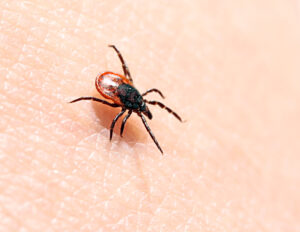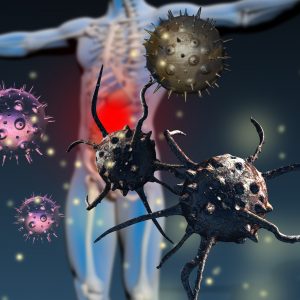
Leaky Gut, Chronic Disease, & Long Term Health
Leaky Gut This blog discusses the very important health issue of leaky gut. You will learn: What is the gut & the gut microbiome What
If you are a doctor or clinician looking to make a bigger impact on the world, have more job satisfaction and have up-to-date protocols and treatment solutions for your patients, check out our free functional medicine training led by functional medicine expert, Dr. Miles Nichols below.
Plus additional BONUS training videos on treating tough cases of brain fog and cognitive impairment!!
In this blog, we will look at Lyme Disease and answer the question ‘How does Lyme Disease become chronic?’ You will learn:
Do you know what Lyme Disease is and how it becomes chronic? Do you or your clients suffer from chronic Lyme Disease and its symptoms? If you want to know more about this increasingly common disease and how to best optimize the health of your clients, then this blog is for you. Please read on for answers!
Do you get stuck clinically with chronic symptoms in your patients? Would you like to have a larger impact on improving your clients’ issues?
The key to optimal health is an individual approach using nutrition, lifestyle and exercise. To improve your patients’ quality of life, you need to identify and address the root causes. Our functional medicine course will teach you how to do this. Look into our functional medicine school (mindbodyfunctionalmedicine.com) to have a greater impact on improving your client’s lives.
** Please note: If you want the short summary version of this article, then please click here **
What is Lyme Disease (LD)?
Lyme Disease is a tick-borne illness. It is caused by the bacteria Borrelia burgdorferi and is transmitted through tick bites. It has many different symptoms and can present in many ways.
After the initial tick bite, a person may develop an early stage Borrelia infection which is acute Lyme Disease. If not treated properly, or in some cases, despite treatment, it can worsen and develop into late stage Borrelia infection or chronic Lyme Disease.
We have written extensively about Lyme Disease in our blogs. Please start here with some definitions of Lyme and continue reading through our blog for tons of information on Lyme Disease. In our clinic, we are experts at diagnosing and treating Lyme.
Is Chronic Lyme Disease Common?
The statistics are contradictory, but they do indicate that chronic Lyme Disease is not uncommon and is a growing health issue.
What exactly is Chronic Lyme Disease?
Unfortunately, Lyme Disease is not completely understood in the medical world. It is often missed or misdiagnosed. When left untreated in its acute early phase, it can become chronic. Sometimes, treatment fails and it can still become chronic Lyme. Sometimes, a person goes undiagnosed for Lyme because they didn’t notice the tick bite and never went to the doctor. In all of these scenarios, a person can develop chronic long-term symptoms that will likely very much affect their quality of life.
Different Types of Long-term Lyme Disease Exist: Chronic Lyme Disease vs. PTLDS
Chronic Lyme Disease and Post-Treatment Lyme Disease Syndrome (PTLDS) are two terms that are sometimes used to describe very similar conditions. Strictly speaking, PTLDS refers to people who were already treated for Lyme Disease but, unfortunately, go on to experience longer lasting Lyme Disease symptoms. It does not include those who received a misdiagnosis or a delayed diagnosis, which then resulted in chronic symptoms of Lyme Disease before receiving any treatment for Lyme. That is defined as chronic Lyme Disease.
It’s a little confusing but the bottom line is that people with either PTLDS or chronic Lyme are still suffering from Lyme symptoms, have a reduced quality of life and are probably not getting the medical help they need. This is where Functional Medicine, and our clinic in particular, can help. Please get in touch with us if you are struggling with ongoing issues from Lyme Disease here.
Post-Treatment Lyme Disease Syndrome is complex with non-specific and subjective symptoms. It is not thought to be caused by an ongoing infection (Schmid H, 2021). The CDC defines PTLDS as symptoms of pain, fatigue or difficulty thinking that last for more than 6 months after finishing Lyme Disease treatment with antibiotics. To diagnose PTLDS, it is mainly a diagnosis of exclusion. This means we rule out any other potential diseases through a process of elimination of other potential conditions.
How do you know if your Lyme Disease is Chronic?
Late-stage Lyme Disease has different symptoms. These may appear months or even years after the initial tick bite. Symptoms of Late-stage, Chronic Lyme or PTLDS include:
That’s quite a long and scary list of possible symptoms. This is why early detection is key as Lyme Disease is easiest to treat within the first 30 days of exposure.
Does your current health situation look like this…
We specialize in finding answers and solutions for complicated chronic illness when people feel like they have tried everything. If this sounds like you, book a free call with us to see if we are the right fit for your health goals.
Why & How does Lyme Disease becomes Chronic?
There are various theories and research on how Lyme Disease can become chronic. It seems that it can be different in different people. We are all individuals and there is never only one reason, or one mechanism of action, for illness. The Borrelia bacteria can react differently once it is in different bodies.
Some theories for the mechanism of action for long-term chronic Lyme include:
Autoimmunity
The Borrelia burgdorferi Lyme infection can trigger persistent immune activation or an autoimmune response (Columbia University, 2021). The infection may trigger an autoimmune response that causes symptoms that last, even after the infection has been cleared. Autoimmune responses and syndromes can happen after other types of infections, such as campylobacter leading to Guillain-Barré syndrome, chlamydia leading to reactive arthritis and strep throat leading to rheumatic heart disease (CDC, 2022) and (Columbia University, 2021).
Severe inflammation can result from the Borrelia bacteria, co-infections and how an individual person’s body responds. This dysregulated inflammatory response from the immune system can trigger autoimmunity or an autoimmune-like reaction, as a result of Lyme Disease. This happens in the case of Lyme arthritis for example (see our blog here) and can be difficult to resolve.
Persister Bacteria lie Dormant
Some experts think that PTLDS is due to a persistent but very difficult to detect infection (CDC, 2022) and (Columbia University, 2021). Borrelia can act as a ‘persister’ bacteria (Rudenko N, 2019). Persister bacteria are thought to be responsible for recurrent and chronic infections, like TB and leprosy. Persister bacteria can remain dormant in the body and can survive high dose antibiotics. Once the antibiotics course is finished, persisters start to grow again like normal cells (Rudenko N, 2019).
Lyme Disease can lie dormant and then be reactivated at a later stage. Lyme disease can remain dormant for weeks, months or even years. When symptoms do eventually develop, they can be severe. So, it may seem that treatment worked, but then if the immune system becomes a little weak, it can be reactivated. Alive Borrelia bacteria has been found in 7 out of 8 patients with chronic Lyme Disease (Davidsson, 2018). The immune system by itself cannot eradicate a Borrelia infection (Davidsson, 2018).
Biofilms
The Borrelia bacteria can hide behind biofilms, which can form to protect the bacteria. Borrelia can burrow deep into tissue and hide. It is then unreachable by any antimicrobials or antibiotics. In fact, persister bacteria are found in biofilms, which shield the persister cells from our immune cells.
These dormant bacterial cells can hide in biofilm and survive the standard antibiotic treatment and then be reactivated (Rudenko N, 2019). Many scientific studies show that the Borrelia bacteria can survive 3 weeks of oral antibiotics in vitro and in vivo, in mice, dogs, horses, monkeys and in humans (Davidsson, 2018).
Different Complex Borrelia Strains
The Borrelia bacteria has the most complex genomic structure among known bacteria (Davidsson, 2018). Borrelia bacteria are very genetically diverse.
There are different strains of the Borrelia bacteria. A person infected with one type of Borrelia strain will have different symptoms compared to a person infected with another strain of the Borrelia bacteria (Davidsson, 2018). The immune system will develop different types of antibodies to fight the infection, depending on which strain is present. This means the different Borrelia strains will produce different immune system responses in the form of antibodies in an infected person. The standard treatment of care, antibiotics, is too general and may not be able to fight off the different Borrelia strains. So, treatment is not guaranteed to work.
Borrelia bacteria evades the immune system by changing morphology, meaning it can change its form and structure. The bacteria can avoid being killed by broad-spectrum antibiotics by changing morphology and by changing its outer surface proteins, which are antigens. When the bacteria can change its antigens all the time, the specific antibodies produced by the immune system to eradicate the infection become useless (Davidsson, 2018).
Complexity of Borrelia
Lyme arthritis can develop because the Borrelia burgdorferi bacterium has an unusual chemical composition (Jutras BL, 2019). Components from the Borrelia bacteria may persist after initial infection and continue to trigger an immune response. This may contribute to or cause the excessive inflammation seen in Lyme and can still happen even after the Lyme bacteria have been killed off (Jutras BL, 2019).
A component of the Borrelia bacteria, called the peptidoglycan (PG), may persist and cause a continued immune response (Lochhead RB, 2021). PG prompts pro-inflammatory responses during the infection and even post-Lyme infection (Donta ST, 2021).
The Borrelia bacteria is different from other bacteria. Borrelia burgdorferi does not have a PG recycling pathway. Other bacteria do. In normal bacteria, 40–50% of their PG is degraded in the normal remodeling and recycling process (Jutras BL, 2019). In gram-negative bacteria, the majority of PG is recycled (Jutras BL, 2019). But the peptidoglycan of Borrelia burgdorferi has a different structure and the bacteria is unable to reuse it.
Instead, Borrelia dumps the PG into its immediate surroundings. So large amounts of PG fragments are released into the immediate location of the Borrelia bacteria (Donta ST, 2021). This causes continued inflammation and on-going, possibly chronic, symptoms.
Lyme Co-Infections
Borrelia has many different co-infections: Babesia, Bartonella, Ehrlichia, etc. A tick can spread approx. 237 different types of bacteria and many types of viruses (Davidsson, 2018). Chronic Lyme patients might be simultaneously infected with other microbes. These infections are called co-infections. They may go undiagnosed or misdiagnosed and symptoms will persist if treatment is not given.
Damage from Borrelia
There may be damage from the prior Borrelia Lyme infection, including possible changes in brain chemistry. This can, in some cases, lead to abnormally activated pain or mood pathways or altered cognition (Columbia University, 2021).
Misdiagnosis
Misdiagnosis can often happen with Lyme. The testing can give a false negative result. The doctor may not be Lyme-literate and therefore not recognize the symptoms of Lyme Disease. The doctor may interpret the Western Blot test incorrectly. If Lyme Disease is misdiagnosed, i.e., not found, then it will be untreated and can develop into a chronic condition.
Other causes
It could be that the symptoms of PTLDS are due to other root causes and are unrelated to the initial Borrelia burgdorferi infection (CDC, 2022).
In the case of chronic Lyme or PTLDS, we recommend following a Functional Medicine approach. More antibiotics for a longer time has been shown in research to be ineffective. Chronic Lyme requires a deep and multi-pronged approach. You need to get to the underlying root causes. See more about treating Lyme Disease in our blogs here and here.
Summary
In our clinic, we are Lyme-literate doctors. We are experts at identifying root causes, diagnosing conditions like chronic Lyme Disease and helping people to address the root causes of illness and improve their health. We treat Lyme Disease and post-Lyme chronic symptoms, with both natural and pharmaceutical approaches, depending on the individual case.
** Please stay tuned for our next Blog! **
If you are a clinician wanting to learn more about treatment of Lyme Disease, please check out our clinician training programs here.
Does your current health situation look like this…
We specialize in finding answers and solutions for complicated chronic illness when people feel like they have tried everything. If this sounds like you, book a free call with us to see if we are the right fit for your health goals.








Leaky Gut This blog discusses the very important health issue of leaky gut. You will learn: What is the gut & the gut microbiome What

Research on Alzheimer’s disease is continuously looking for what causes the disease and how to better treat Alzheimer’s. A relatively new finding suggests that Alzheimer’s

In this blog, we will look at Lyme Disease and answer the question ‘How does Lyme Disease become chronic?’ You will learn: What Lyme Disease

In this blog, we will look at the causes of Bartonella. You will learn: What Bartonella is and how it compares to Lyme Disease What

In this blog, we will look at the many symptoms of Bartonella. You will learn: What Bartonella is and what causes it What are the

In this blog, we will look at Bartonella. You will learn: What Bartonella is and how it compares to Lyme Disease How Bartonella is spread

In this blog, we will look at Lyme Disease and answer the question ‘Is Lyme Disease curable?’ You will learn: What Lyme Disease is How

In this blog, we will look at Lyme Disease and the growing threat that it has become. You will learn: What Lyme Disease is How

In this blog, we will look at Lyme Disease and mental health. You will learn: How and why Lyme Disease can affect mental health How

In this blog, we will look at cognitive impairment & Alzheimer’s Disease in relation to various lifestyle factors. You will learn: How lifestyle can affect

Alpha Gal Syndrome Today’s article outlines a condition that is thought to affect, conservatively, 3% of the US population. However, there may be many undiagnosed

Can Lyme Disease Cause Joint Pain? In this blog, we will look at Lyme Disease and joint pain. You will learn: How & why Lyme
There was a problem reporting this post.
Please confirm you want to block this member.
You will no longer be able to:
Please allow a few minutes for this process to complete.

